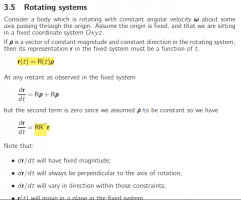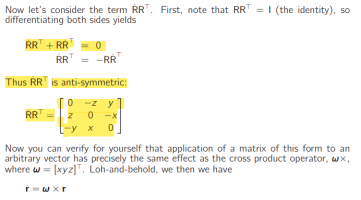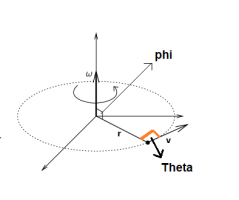Win_odd Dhamnekar
Junior Member
- Joined
- Aug 14, 2018
- Messages
- 207
What are the meanings of highlighted expressions in the following image?

What is the meaning of highlighted expression and how the 3 × 3 square matrix is derived in the following image?

Is \(\displaystyle \dot{R}R^T\) equal to derivative of R times transpose of R? Is R(t) vector?
If any member knows the answers to these questions may reply.

What is the meaning of highlighted expression and how the 3 × 3 square matrix is derived in the following image?

Is \(\displaystyle \dot{R}R^T\) equal to derivative of R times transpose of R? Is R(t) vector?
If any member knows the answers to these questions may reply.

